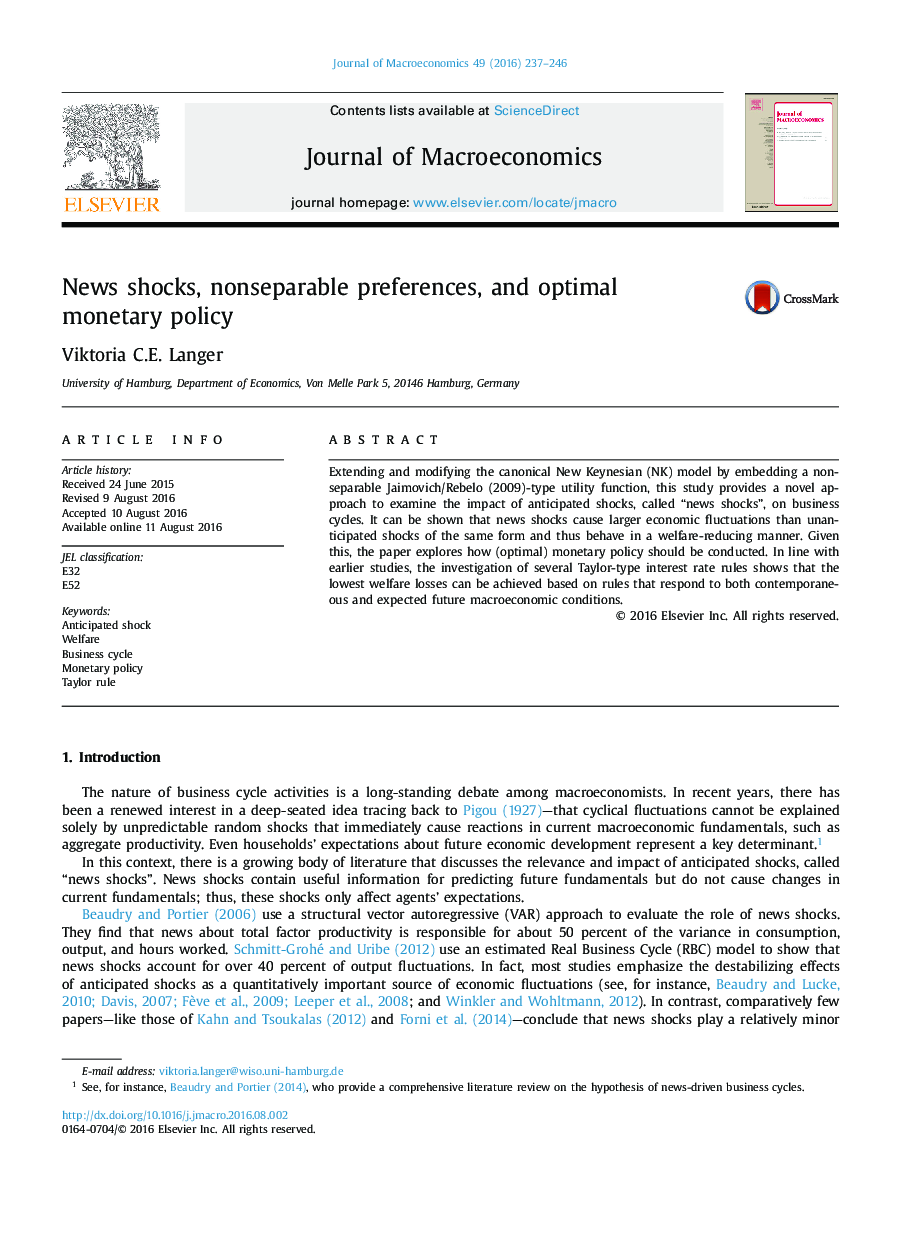| Article ID | Journal | Published Year | Pages | File Type |
|---|---|---|---|---|
| 965135 | Journal of Macroeconomics | 2016 | 10 Pages |
Abstract
Extending and modifying the canonical New Keynesian (NK) model by embedding a nonseparable Jaimovich/Rebelo (2009)-type utility function, this study provides a novel approach to examine the impact of anticipated shocks, called “news shocks”, on business cycles. It can be shown that news shocks cause larger economic fluctuations than unanticipated shocks of the same form and thus behave in a welfare-reducing manner. Given this, the paper explores how (optimal) monetary policy should be conducted. In line with earlier studies, the investigation of several Taylor-type interest rate rules shows that the lowest welfare losses can be achieved based on rules that respond to both contemporaneous and expected future macroeconomic conditions.
Related Topics
Social Sciences and Humanities
Economics, Econometrics and Finance
Economics and Econometrics
Authors
Viktoria C.E. Langer,
